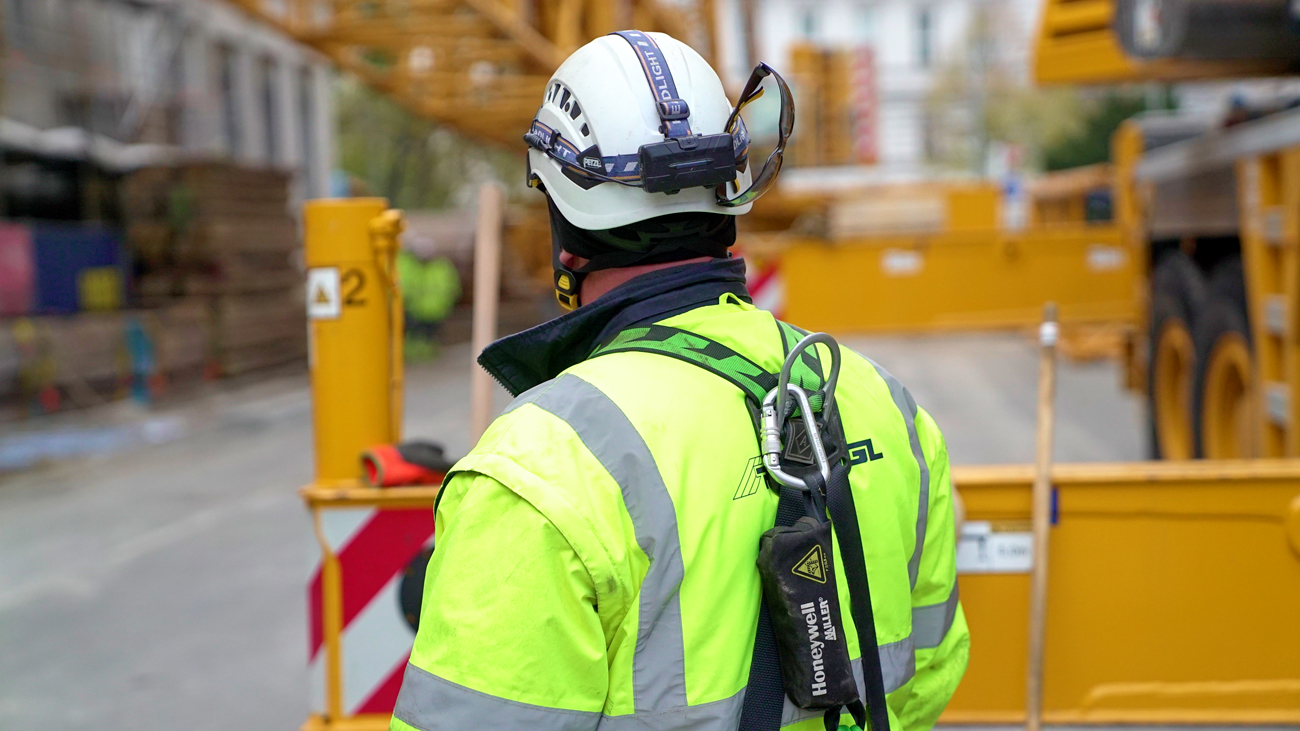Wien Museum
Armin Ampferer
Schmidt Jochen
Giuffrida Roberto

The challenge
Heavy load for top architecture
The conversion of the Wien Museum is giving Karlsplatz an architectural makeover. But how do you get oversized steel trusses from Carinthia to downtown Vienna? And how do you lift them onto the Oswald Haerdtl-designed building that opened in 1959?
Our solution

Ten special transports
A total of ten special transports were necessary to bring the different steel trusses from Carinthia to Vienna. These ten trips were performed with seven different equipment combinations, where the largest transport unit was a 4-axle tractor with a 14-axle heavy duty combination. This hauled the largest piece with a width of 6.4 metres, a length of 40 metres and a unit weight of 108 tonnes. The resulting transport dimensions were even more impressive: 47.5 metres long, 6.4 metres wide, 4 metres high and a total weight of just under 200 tonnes.

Optimum special transport equipment
In addition to carrying out the transport, the yellow specialists were also responsible for the entire route planning, the comprehensive approval process and all reconstruction measures along the transport route. The preliminary work for this spectacular undertaking began already in March 2021. Initially, there was the question of suitable equipment: Especially with regard to the routing and the passage through Vienna's city centre, the transport technology had to be tested for optimal driving characteristics and its ability to negotiate curves. Finally, special equipment was used that is unique in Austria.

Only possible transport route
Due to the transport (over)dimensions, the route check turned out to be extremely complex. A major factor here was weight restrictions due to underground shafts and substructures in Vienna. To make the passage through Vienna possible at all, construction measures in the six-figure Euro range were required. Road works on the A2 meant a direct route via the motorway was not possible. In the end, it was necessary to go via Slovenia. This, in turn, necessitated the reconstruction of the "Karawanken Tunnel" border crossing. And another road works also made a second alternative route imperative.

Optimum crane technology
Eight support vehicles guided the heavy-duty transportation to Karlsplatz in Vienna. There, they were welcomed by a 600-tonne crawler crane with a system length of 84 metres. Some of the trusses were lifted directly, others were assembled while still on the ground. The heaviest steel element had an individual weight of 165 tonnes. In order to position the large crane – the size of a single-family house – between two inner-city buildings and close to an underground shaft, a number of measures were needed: Road closure, numerous stopping restrictions, removal of street lights and the relocation of a cycle path.

Supplementary crane technology
The erection of the large crane was precisely timed and followed a strict order. Due to the confined space conditions, everything had to take place just-in-time. A crane parking area suitable for the crawler crane was also very important. After all, the yellow giant weighed 750 tonnes. For this purpose, the road was filled in and then completely covered with excavator mats made of hardwood. The complex lifting logistics were rounded off with a 500-tonne telescopic crane that replaced the crawler crane after around a week and a half. With a system length of 79.2 metres, it mastered the final strokes in two different places. The extremely good cooperation of all stakeholders in the run-up to the event made this unique undertaking ultimately a success.




























































![[Translate to EN:] Raupenkran hebt Rohrschuss für Drehrohrofen](/fileadmin/content/projekte/2021/05_Drehrohrofen/Galerie/Teaser_DD4B1363.jpg)